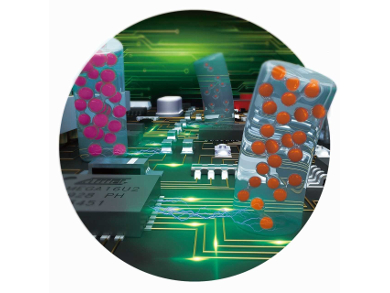Sodium-ion batteries (SIBs) are a cost-effective alternative to the commonly used lithium-ion batteries. Tin oxide (SnO2) is a promising material for use in battery anodes. However, the sluggish reaction kinetics, unstable Sn/Na2O interface, and large volume expansion of this material are obstacles to practical applications of SnO2‐based electrodes for SIBs.
Peixin Zhang, Shenzhen University, China, Zhiqun Lin, Georgia Institute of Technology, Atlanta, USA, and colleagues have developed a material in which SnO2–x nanoparticles, which have oxygen vacancies, are encapsulated by conductive carbon nanofibers. The resulting composite functions as an anode material with good reaction kinetics.
This is due to the material’s well-defined void spaces and the high discharge capacity of SnO2–x nanoparticles. The conductive carbon matrix allows a rapid electron/ion transfer and hinders SnO2–x volume expansion during the charge/discharge process, which gives the material excellent cycling stability. In addition, the composite does not require binders or conductive additives to operate as a working electrode.
The team believes that their strategy could be extended to other metal-oxide-containing carbon composites for use as electrodes in high-performance energy-storage systems.
- Robust SnO2–x Nanoparticle-Impregnated Carbon Nanofibers with Outstanding Electrochemical Performance for Advanced Sodium-Ion Batteries,
Dingtao Ma, Yongliang Li, Hongwei Mi, Shan Luo, Peixin Zhang, Zhiqun Lin, Jianqing Li, Han Zhang,
Angew. Chem. Int. Ed. 2018.
https://doi.org/10.1002/anie.201802672



